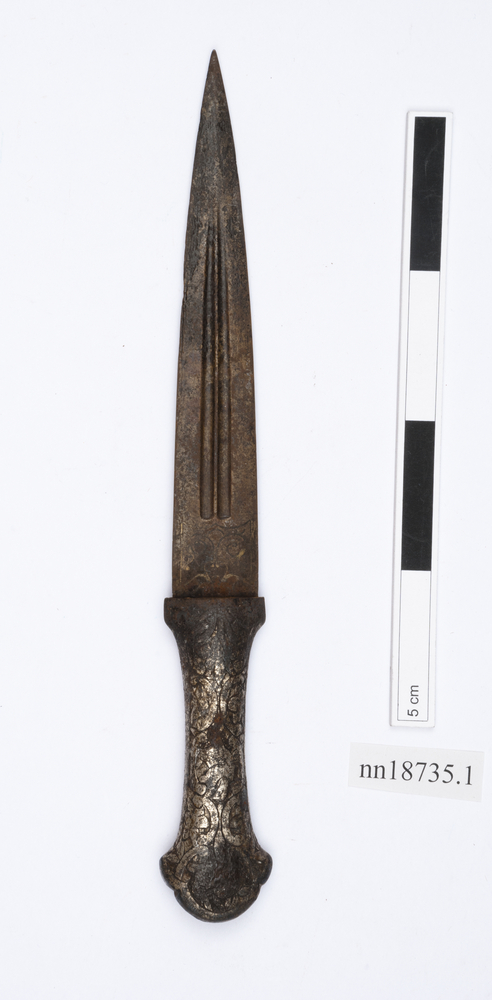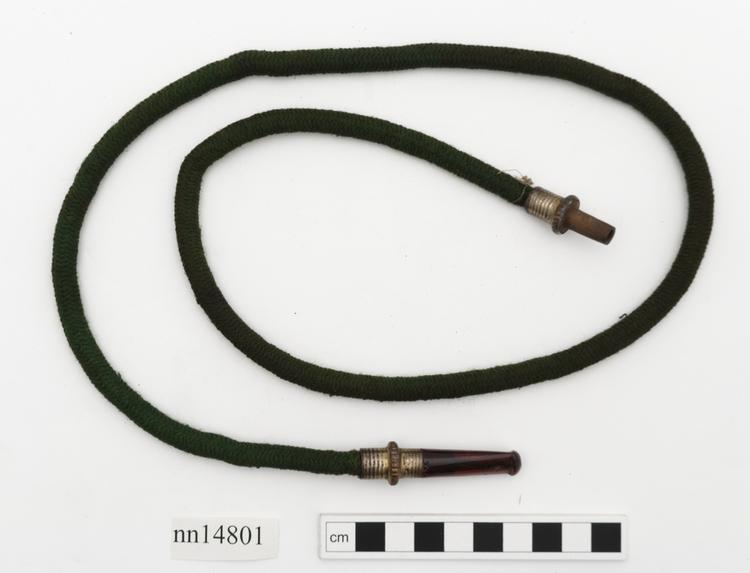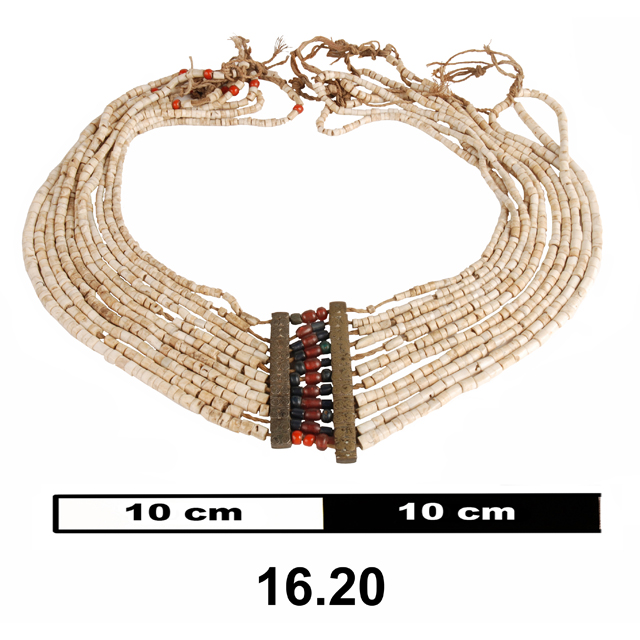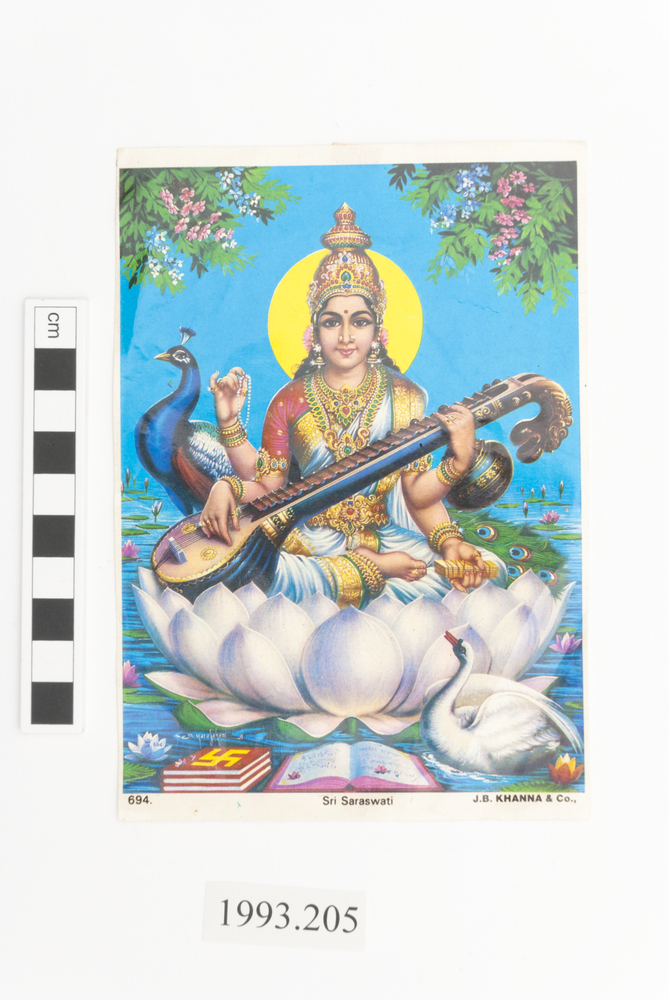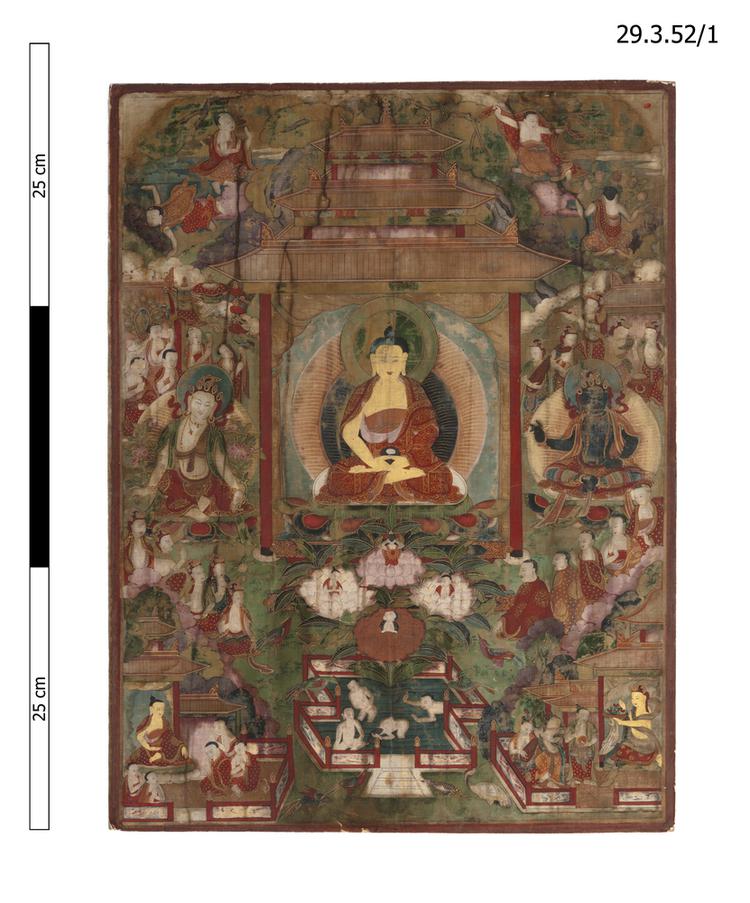
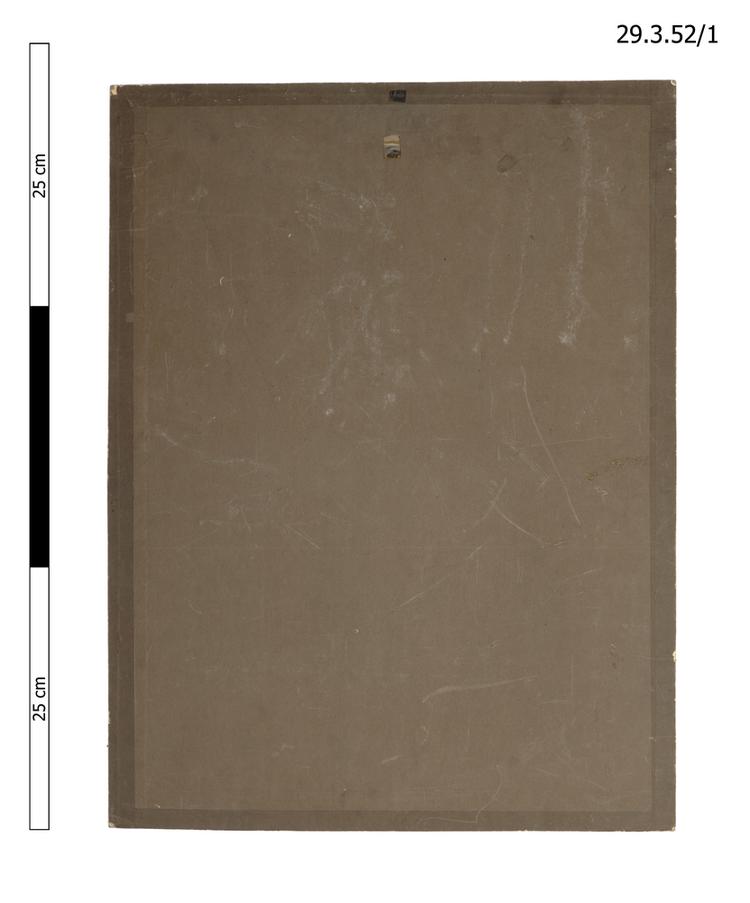
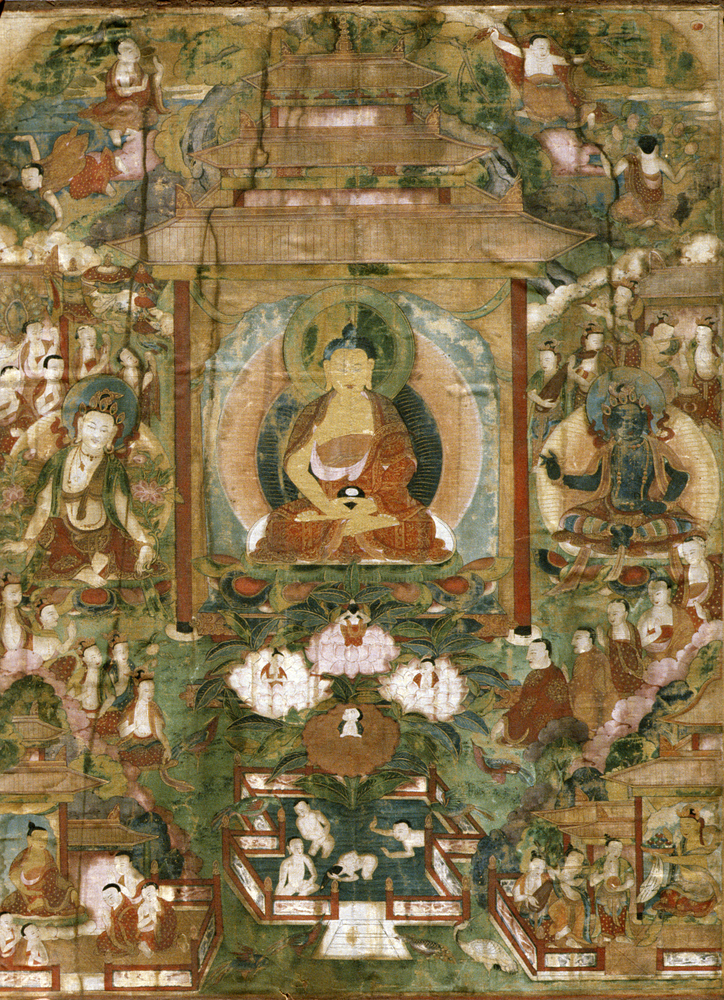

Thangka depicting Amitabha in his Pure Land, the western paradise Sukhavati, 'The Blissful', FL: Padmapani; FR: Vajrapani; below C: four lotuses with prostrating monks; 33 other figures, plus BL: Shakyamuni; BR: a Buddha bearing a tray with ten jewels. 710 x 540mm.
Thangka are devotional paintings which are particularly associated with Vajrayana Buddhism. They are always executed on cloth and often have ornate fabric surrounds and covers. Thangka can fulfil several different purposes -they are for example often used as teaching aids- however, perhaps their most important role is to focus meditation. Thangka that are used for meditation will generally depict a yidam; a special deity, the particular attributes of which assist a practitioner’s spiritual progression. A yidam is often allocated to a practitioner by a mentor who understands the practitioner’s specific needs. By inhabiting the body and attributes of the yidam through meditation a practitioner can work to erode the obstacles to enlightenment. Since thangka are sacred objects their manufacture follows careful guidelines. For example, thangka painters must follow pre-established templates when depicting specific deities. Not to do so would jeopardise the efficacy of the thangka. It is also argued that thangka painters should approach their work in a right-minded manner; the large-scale manufacture of thangkas for sale to the international market, is for some a distortion and a devaluation of the practice of thangka painting.



